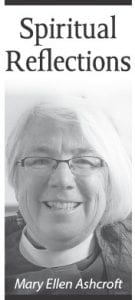When did you encounter a work of art that moved you, pulling you out of your humdrum (or over stimulated) day? For many people, art—making it or seeing it— can be a profoundly spiritual experience: transformative as it forces us to see differently.
The third area I focused on in my sabbatical was this one, especially on the arts and social change, looking for areas of relevance between South Africa and Cook County. Three particular findings:
1. I saw in South Africa as I see here in Cook County, that extraordinary spark of creativity within the human soul. From paintings done thousands of years ago high in the Drakensberg Mountains by San (Bushman) people portraying their relationship with the animal world, to baskets crafted out of reeds, wire, and plastic bags. Little mud and wattle huts painted bright turquoise, spring green, sunny yellow, dotted the hillsides. What an extraordinary “given”—that creative spark from the creator that impels people to create, not just a utilitarian bowl, but something beautiful.
2. In South Africa, I saw how this creative spark can provide meaningful employment, yet needs the crucial practicality of financing, marketing, showing, transporting, so that money flows back into the community. Near Cape Town, we visited a workshop using tea bags— painted and transformed into hangings, bags, ornaments, and coasters. We talked to several people who had been able to send their children to school or buy a small house because of this work. In Durban we met artists who created jewelry, bowls, clothing, and cards, which were marketed and sold to provide both work and money for an area suffering from the effects of HIV/AIDS.
In Cook County, we have heard much about being an arts economy: how do we more fully encourage our artists, bring other artists here, and aid those who have not yet discovered their creativity spark but need more employment? We have such fabulous art promoting institutions, but how can we more fully support showing, marketing and distributing art?
3. The third area is around art and social change. After the Soweto riots in 1976, many South African artists signed a document pledging not to do art that was simply pretty or nostalgic, but to think about how their art might promote social change. No more paintings of “the happy native” by a thatched hut, like someone might have portrayed the happy slaves outside their simple huts in the American South—“see, really, they are happy in their own way!”
This raises huge questions. Art is not propaganda, designed to push a certain point, and yet to be art, it cannot be simply sentimental, comforting the comfortable.
NPR photographer, David Gilkey, who was killed in Afghanistan two weeks ago, said his photos were meant to change people’s mind enough that they would think and act differently. Art can do that.
A Lutheran art college in Rorke’s Drift, KwaZulu Natal, was for many Apartheid years the only place where native artists could train and work. Their protest art is shown around the world—I recently saw some at the Weisman Museum in Minneapolis.
Yet art need not change our minds only politically or socially: any art that helps us ‘see’ in new ways is to be honored. I see Lake Superior differently because of some Cook County artists. I believe that seeing and noticing God’s good creation is the beginning of worship.
A remarkable interweaving of these three “uses” of art came in Hamburg, a village on the Indian Ocean near Grahamstown. Twenty years ago, the area was devastated by the HIV/AIDS crisis, suffering losses of community members and accompanying economic hardship. A doctor moved to the area and started treating people. Also an artist, she encouraged artistic expression. Their work, especially as seen in the Keiskamma Altar Piece, is profound art, portraying in fabric the suffering, the beginnings of hope, and in the central panels, families looking forward. Their art has traveled the world, and provides income for many in the community. (Zinzile Zodwa Batyashe will be visiting from Hamburg from July 22-25, and presenting on their community work in health, education and fabric arts.)
These emphases in the arts—art as that God-given spark to create, art as a way to promote community well-being, and art as it changes the way we see our world—these are common to South Africa and to Cook County.
Each month a member of the Cook County Ministerium will offer Spiritual Reflections. This month’s contributor is Mary Ellen Ashcroft, Vicar of Spirit of the Wilderness Episcopal Church.



Loading Comments